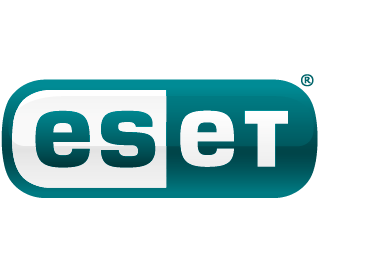- ESET Inspect has been integrated into Arctic Wolf’s Managed Detection and Response solution to provide proactive defense via their cloud-native platform and human expertise
- Arctic Wolf customers will gain access to real-time global telemetry, detailed reports and actionable insights that arm them against more diverse and sophisticated attacks
- The integration marks an important milestone for ESET as it expands its integrations platform and collaborates with best-in-class technology companies
BRATISLAVA – April 24, 2024 — ESET, a global leader in next-gen digital security for business, today announced a new integration with Arctic Wolf, a global leader in security operations, to ensure increased visibility and protection against modern threats. By integrating ESET Inspect into Arctic Wolf’s Security Operations Platform, Arctic Wolf customers are able to enhance their security posture – aggregating vast amounts of data from diverse, global sources.
“Businesses today and the channel community are demanding technology ecosystems that simplify cybersecurity management, offer complete visibility across a variety of attack surfaces, and bring industry leaders together under one architecture,” said Trent Matchett, Director of Direct Channel
Global Sales at ESET. “We have invested significantly in the ESET PROTECT Platform and an open API gateway to empower an impressive catalogue of integration partners moving forward. Arctic Wolf is one of the most trusted MDR vendors in the world, and an exciting milestone for our integrations program.”
Arctic Wolf helps organizations end cyber risk by providing a cloud-native security operations platform, with solutions that include Managed Detection and Response, Managed Risk, Managed Security Awareness, and Incident Responses, each delivered through the industry-pioneering Concierge Delivery Model. Arctic Wolf’s Concierge Delivery Model provides tailored risk mitigation guidance and security insights based on the telemetry of the customer’s tech stack, like ESET Inspect, to keep an organization’s environment safe.
“Arctic Wolf and ESET share the common belief that embracing openness and interoperability are essential for helping to deliver the positive cybersecurity outcomes that organizations demand,” said Ian McShane, VP of Managed Detection and Response at Arctic Wolf. “The new ESET PROTECT Platform API allows ESET Inspect data to seamlessly integrate with the Arctic Wolf Platform, that when combined with the telemetry from other security tools, ensure Arctic Wolf customers get holistic protection against an ever-evolving threat landscape.”
As a result of this integration, Arctic Wolf customers will gain access to:
- Real-time Incident Response, including Post-Incident Analysis and Remediation:
ESET Inspect will enable the detection of suspicious activity on a client’s endpoint, sending alerts to Arctic Wolf, who can then conduct a security investigation, confirming the threat and then employing immediate response followed by an analysis of the acquired data to assess the damage and prepare for future threats. - Regulatory Compliance:
Because clients must comply with several regulatory standards that can require detailed logs of all activity on their endpoints, ESET Inspect will provide these logs so that Arctic Wolf can help their customers ensure compliance. - Managed Security for Resource Constrained Organizations :
Many organizations often lack the resources to house internal security teams, so they contract an outside partner like Arctic Wolf to assist with their cyber defenses. Thanks to ESET Inspect and its data, Arctic Wolf customers will be better equipped to provide a high level of security to organizations of almost any size without them having to hire and train their own security personnel.
ESET Inspect acts as the XDR-enabling module of the ESET PROTECT platform, delivering breach prevention, enhanced visibility and remediation. ESET Inspect is a comprehensive detection and response with rich features such as: incident detection, incident management and response, data collection, indicators of compromise detection, anomaly detection, behavior detection and policy violations. For more information on ESET Inspect, visit here.
For more information on ESET’s investment on API integrations and opportunities to partner, visit here.
Find more information about how Arctic Wolf can help organizations end cyber risk here.
About Version 2
Version 2 is one of the most dynamic IT companies in Asia. The company develops and distributes IT products for Internet and IP-based networks, including communication systems, Internet software, security, network, and media products. Through an extensive network of channels, point of sales, resellers, and partnership companies, Version 2 offers quality products and services which are highly acclaimed in the market. Its customers cover a wide spectrum which include Global 1000 enterprises, regional listed companies, public utilities, Government, a vast number of successful SMEs, and consumers in various Asian cities.
About ESET
For 30 years, ESET® has been developing industry-leading IT security software and services for businesses and consumers worldwide. With solutions ranging from endpoint security to encryption and two-factor authentication, ESET’s high-performing, easy-to-use products give individuals and businesses the peace of mind to enjoy the full potential of their technology. ESET unobtrusively protects and monitors 24/7, updating defenses in real time to keep users safe and businesses running without interruption. Evolving threats require an evolving IT security company. Backed by R&D facilities worldwide, ESET became the first IT security company to earn 100 Virus Bulletin VB100 awards, identifying every single “in-the-wild” malware without interruption since 2003.












